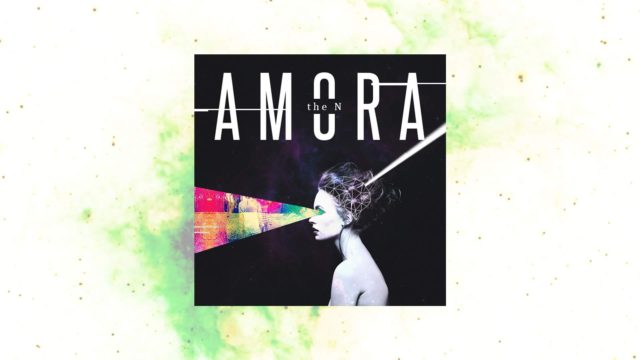By : Anand Iyer a.k.a Nasir X

2008, Mumbai Hip-Hop scene was unheard of. Nobody knew any rappers, extremely small circles of operation, Orkut groups, text battling, rough recordings, no sense of production or engineering by a long shot whatsoever.
Imagine a barren land or a desert, nothing to reap from it, nothing you could build upon it, but that’s unless you’ve heard of Vegas which more or less metaphorically is what happened.
Fast forward to 2016, 8 years from then, an average of 5 singles put out everyday by numerous aspiring, respected, established, large, all kinds of rappers. That means 5 brand new songs from the same land I belong to embracing some corner of the internet to serve their respective amounts of ears.
Uni-directional, poor quality dynamic mics to whole setups now venturing into vacuum tubes, real or virtual, precisely chosen monitors with a great calibration, proliferating sense of production style, handpicked plug-ins, percussion and the little studio secrets, got it all (Almost like a new New York being born far away from the original)!
The point here is to not speak about how long a way hip-hop has come, there are click-bait articles for that and they serve their purpose. We are here to discuss, as aforementioned, the changing face of hip-hop within the thriving, young, gushing, volatile culture. I’ll be talking about the music part in depth and exclusivity.
We came from Shadowville beats, instrumentals of existent songs to YouTube rip-off beats when it still had a silver bar beneath with a big red seek to it.
Chrome literally didn’t exist and Firefox was everybody’s favorite, this is the same time around when Counter Strike 1.6 was still the thing to play and Modern Warfare (I) was what every gamer wanted.
Every rapper or hip-hop artist you knew was either in school or high school back in 2008 except for a few. You couldn’t completely blame the residents of a 3rd world demimonde when all you could’ve heard was muffled recordings, sloppy MP3 conversions, off beat flows, zero mic presence, no sense of delivery and you would’ve been totally correct had you said that all of us sounded the same.
Not to forget the thick, visible or imminent Eminem influence from what his discography was back then. A bunch of scrambling children downloading stuff off of CoolToad and LimeWire, recording on Windows Sound Recorder, with ‘professional’ help from Audacity which has the audacity to call itself anything except bullshit.
What was happening was actually a haphazard exit strategy being created by suburban children of Bombay for their flow of creativity outside of what was being force-fed. That was precisely where it all started for a regular Bay kid.
What changed? Involvement, firstly. Above and before everything anyone with even a little flare for doing it wanted to do it and it was a whole lot of space, everybody could be accommodated, such was done too. Today we have an abundance of audience and we could proudly growl, screech and scream to tell that we, the hip-hop community put out the most amount of music. Period.
What changed was the realization of various small areas that lie within the beautiful monument of this music. The need to have your own sound, the need to have at least one competitive edge to yourself, the need to embrace what’s better than you, the need to be righteous about your potential musical influence in the scattered suburbia.
To reach out to different areas, get thorough with elements like delivery, presence and linguistic proficiency coupled with signature style if any in the rapper area and to critically emphasize on your sound, your mood, your turf of soundscape or rather your ‘vibe’ in the producer area.
What is changing right now is the quality and presentation of music in accompaniment to the visual aesthetics of music videos. That’s the ‘right now’. Exclusive directors, DOPs, editors, teams altogether.

From broken flows to intricate multis spit like a true professional inside a booth. The artistic knowledge of having to record responsibly or rather, paying attention to the input to gain maximum from the output. Carefully laced AutoTune, stereo wideners, very specific and sometimes locked compression techniques, etc.
What more? The business aspect of things. The entrepreneurial side on the rise. Marketing strategies, serious industry involvement, cheques, taxes, label deals, gig budgets, public relations, managers and A&Rs.
Over and all, the suburban dreams have gracefully stepped out of adolescence and are marching firmly towards maturity with a taste of quite a handful of languages in rap music rubbing shoulders together, albeit the right way in the land where time is relentlessly swift.
About the author : Anand Iyer a.k.a Nasir X is one of the most dominant rappers and music producers from Thane/Bombay. Professionally, he works as the sound engineer of renowned performer Terence Lewis and his proprietaries. With commercial and underground experiences of a good variety, Nasir is projected to be involved in the production of a few new Indian albums and may be in talks with Anand Bhaskar (Of Anand Bhaskar Collective) for a project we are yet to witness. The latest confirmed endeavour on his part has been his involvement in World Kabaddi Championship serving as the go-to guy for all creative, audio-related queries and changes for the show. Nasir has been working on his documentary as well, the release date of which hasn’t yet been confirmed with the media.
Other Recommendations:
http://edtimes.in/2016/06/the-kanye-west-problem-the-world-hates-a-genius-superstar-whereas-i-a-true-fan-stands-beside-him/
http://edtimes.in/2016/05/gnash-the-budding-all-rounder/






























